Charleston Harbor Tours
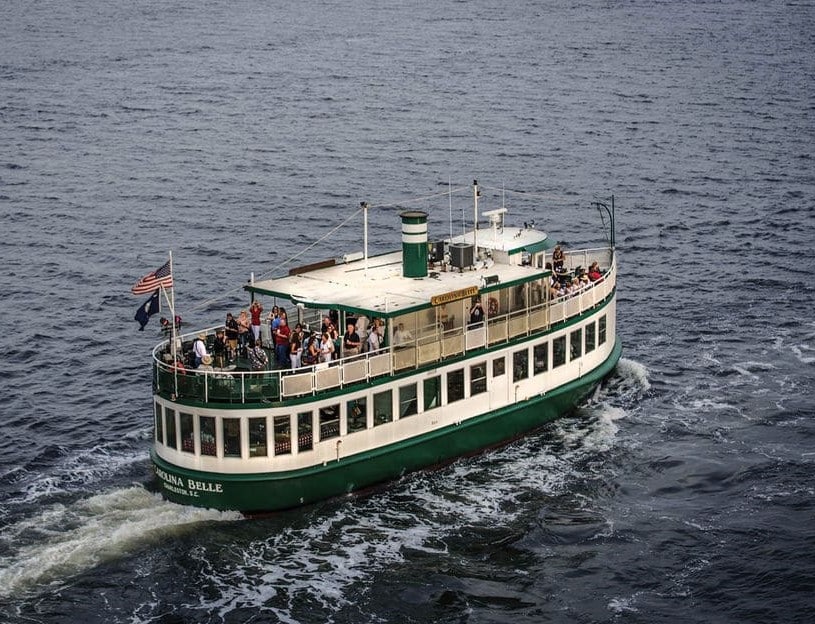
Climb aboard the Carolina Belle to enjoy the beauty of the Charleston Harbor and learn the rich history of the Holy City. During the scenic and relaxing 90 minute tour, you will see over 75 landmarks and points of interest! Tour departs multiple times per day. Your professional USCG licensed captain will narrate history, sights, and facts about the Charleston Harbor as you pass locations critical to United States history.
Highlights of the tour
- Tour Duration: 90 minutes.
- Fort Sumter: One of Charleston’s most popular landmarks, where the first shots of the Civil War were fired (does not stop at Fort Sumter)
- Confederate and Union army Forts Moultrie and Johnson
- USS Yorktown: the famous World War II Fighting Lady
- St. Michaels Church: A survivor of both the Revolutionary and Civil Wars, whose steeple was painted black so as not to be an easy target
- Stately homes on the Battery: Symbols of Southern elegance and perseverance
- Cooper River Bridge, including the Arthur Ravenel Jr. Bridge: A state of the art span that accommodates the largest ships in the world
- Dolphins skimming the surface of the water and pelicans diving for food
This family-friendly, relaxing, and insightful cruise is best way to discover the Holy City and its famous Harbor! The 80-foot Carolina Belle features graceful, classic lines. During your cruise, choose between the boat’s two decks – a climate controlled Main Salon and an Observation Deck – or spend time enjoying the spectacular harbor views from each.
Charleston Fun Park

Included with Tour Pass: Receive 2 Premium Attraction Tickets per Person, a $20 per Person Value.
Charleston Fun Park is the go-to place for family and date-night fun! Located just 10 minutes from downtown Charleston in Mount Pleasant.
Premium Attractions Include:
- Go-Karts
- Two miniture golf courses – 36 holes
- Bumper cars
- Virtual Reality Coaster
They also have over 40 arcade games that give out tickets and prizes along mini-bowling, air hockey, skee-ball
Please visit their website to confirm hours of operation, they have summer and winter hours. We have summer hours listed below
Address:3255 N Hwy 17Charleston, SC 29464
Charles Towne Landing State Historic Site
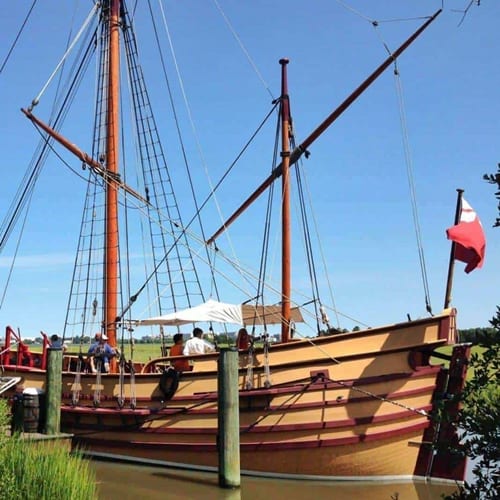
The birthplace of the Carolinas, Established in 1670!
Charles Towne Landing State Historic Site sits on a marshy point, located off of the Ashley River, where a group of English settlers landed in 1670 and established what would become the birthplace of the Carolina colony. Charles Towne Landing introduces visitors to the earliest colonial history of Charleston. Interact with hands-on exhibits in the Visitor Center, talk to knowledgeable staff members, and take an audio tour on the self-guided history trail.
Highlights:
- Guests can step aboard and tour the Adventure, Charleston’s only 17th-century replica sailing ship.
- Natural habitat zoo (the only zoo in Charleston area): See otters, bears, big cats, bison and more at the Animal Forest natural habitat zoo.
- Fireable cannons that are fired on the 1st Saturday of each month.
- 80 acres of gardens, with an elegant live oak alley and the Legare-Waring House.
- Miles of trails for walking, biking and exploring.
- Bicycles welcome or you can rent them on-site.
- Pets welcome if leashed.
Park is closed on Christmas Eve and Christmas Day.
Address:1500 Old Towne RoadCharleston, SC 29407
Boone Hall Plantation
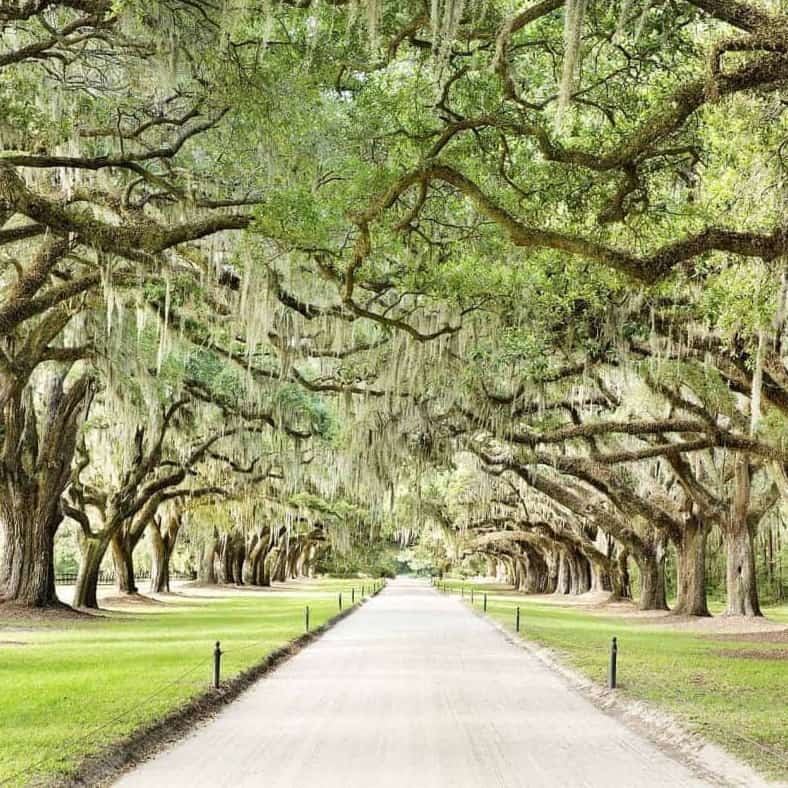
Boone Hall Plantation is an iconic landmark site to visit in the Charleston area. Voted #1 Plantation in Charleston by a USA Today readers poll.
Open 7 days a week.
Admission Includes:
- + Entry down the famous Avenue Of Oaks
- + Black History In America Exhibit
- + Plantation House Tour
- + The Plantation Coach Tour (weather permitting. Limited seating available and will be on a first come first serve basis. Please no food, smoking or pets. Coaches leave when full or hourly).
- + The Slave Street and History Talk. Begins at: 12:15, 1:00, 1:45, 2:30, 3:15, 4:00, 4:30. Garden Tour
- + Exploring The Gullah Culture Live! Showtimes are at: 1:15 and 3:15 only
- + The Butterfly Pavilion Open May-Sept.
- + Free Parking
CLOSED THANKSGIVING AND CHRISTMAS DAY
Arthur Ravenel, Jr. Bridge
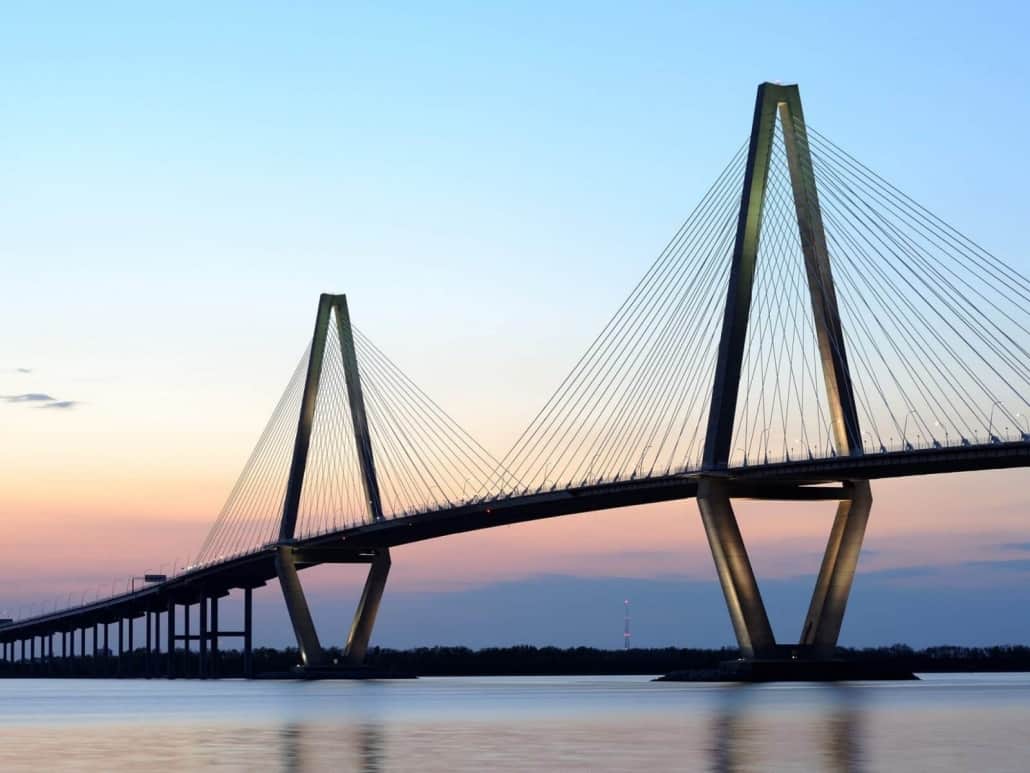
The Arthur Ravenel, Jr. Bridge is a famous landmark in Charleston that straddles the Cooper River taking people to and from Mount Pleasant and downtown Charleston. There is also a pedistrian and bike path that provides amazing panoramic views of the Charleston Harbor.
The Arthur Ravenel Jr. Bridge
Carries: Bikes and Pedestrians
8 Lanes of US 17
Crosses
Cooper River
Locale
From: Charleston, SC
To: Mt. Pleasant, SC
Design
Cable-stayed bridge
Total length
13,200 feet (4.0 km)
Width
eight 12-foot (3.7 m) lanes
Height
575 feet (175 m)
Longest span
1,546 feet (471 m)
Opened
July 16, 2005; 7 years ago
Angel Oak Tree
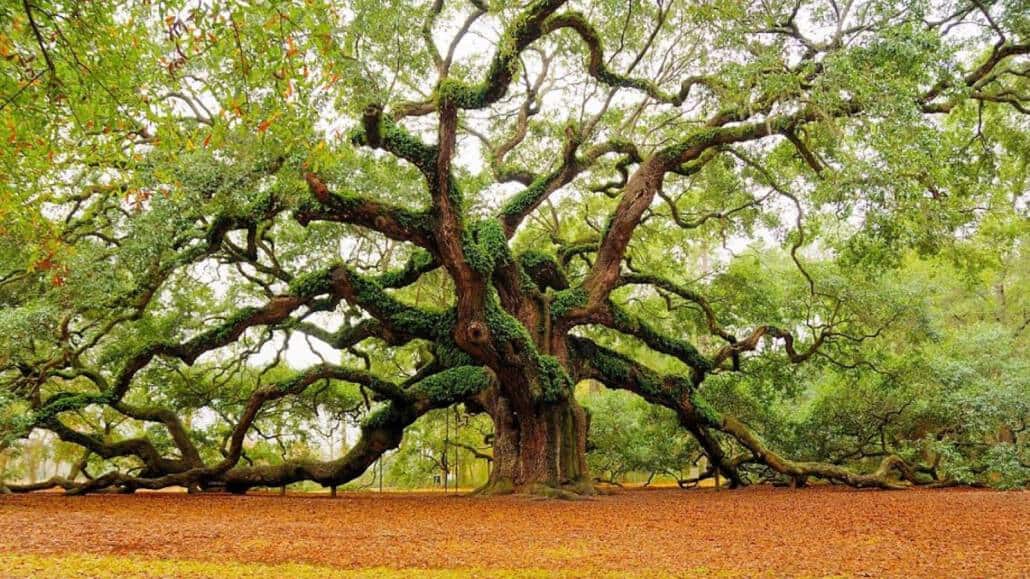
Angel Oak Tree does not charge admission. Only open during operating hours. Please see below.
On Johns Island stands the majestic Angel Oak. Estimated to be between 300-400 years old; the tree towers 65 feet high and has a circumference of 25.5 feet. Its area of shade is 17,000 square feet and its largest limb has a circumference of 11.5 feet, and a length of 89 feet. Live oaks are not particularly tall trees, but have wide-spreading canopies. Only in the very old specimens do you find massive limbs resting on the ground, as you do the limbs of the Angel Oak. The City of Charleston acquired the Angel Oak Park in 1991.
Adventure Sightseeing See It All – Bus Tour
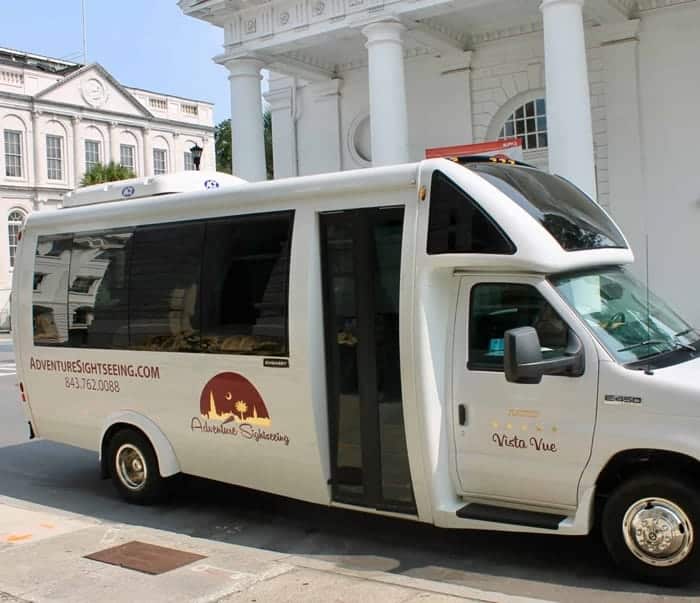
Join Adventure Sightseeing for our ‘See it all’ city tour and see the best of Charleston! Their relaxing and informative 90 minute bus tour is the best way to be introduced (or re-introduced!) to the Holy City. Professional and knowledgeable guides will share 350 years of Charleston history while cruising through the city’s historic district in cool, air conditioned comfort.
Highlights of the 1.5-hour Historic City Tour may include:
- Select stories from 350 years of Charleston history
- Beautiful architecture in the historic district
- Drive through The Citadel, the South’s most famous military academy
- The Old City Market, lovely gardens, wrought iron art, and many of the city’s 210 churches are just some of the sights you will see!
- Tour around the Battery and stop for a photo opportunity with Fort Sumter in the background
- Many other historic sights of Charleston!
ATTRACTION ADDRESS:375 Meeting StreetCharleston, SC 29401
Cotton Exchange Building & Factors Walk
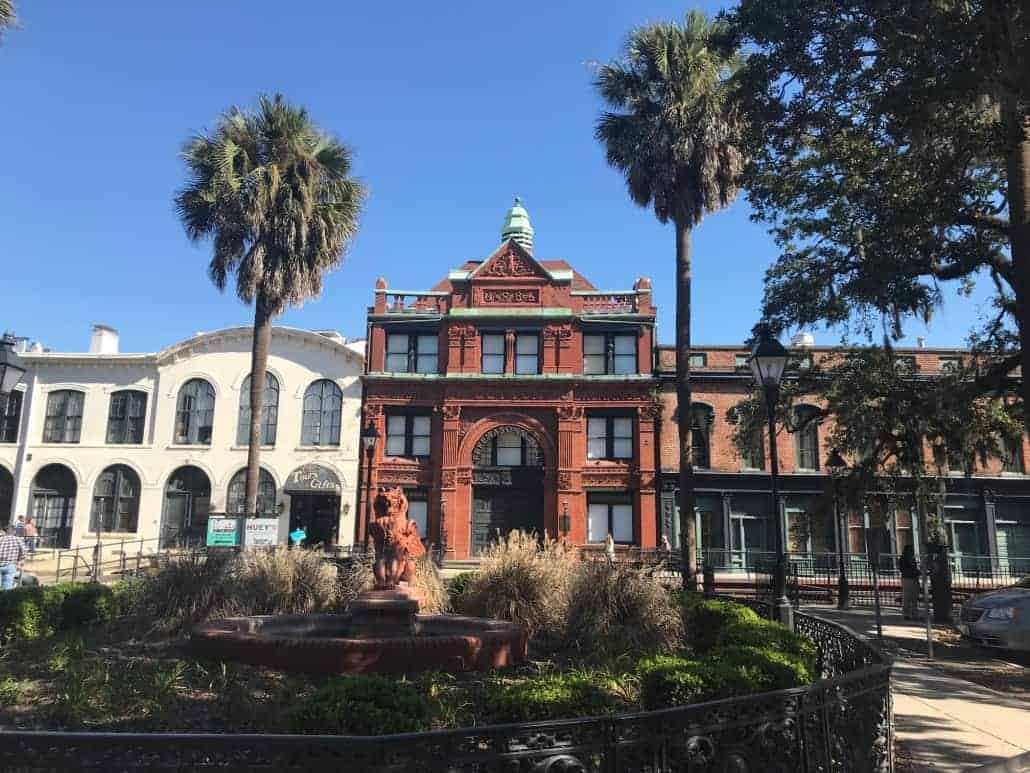
The Savannah Cotton Exchange stands as a grand reminder of cotton’s influence on this city. Built in 1886 by Boston architect William G. Preston, the cotton exchange was one of the first major buildings to be constructed entirely over a public street. Built of red brick with a terra cotta façade, iron window lintels and copper finials and copings, the building is one of the best surviving examples of the Romantic Revival period. The original building was built in 1872 when export revenue from cotton was $40 million when Georgia was the leading cotton producer in the country, and Savannah was one of the major cotton seaports on the Atlantic. By the 1880s the area was known as the “Wall Street of the South.” Ironically the current building was constructed when cotton was only selling for as little as ten cents a pound. But it was a little insect, the boll weevil, which finally rendered the building obsolete by 1920. In the front of the exchange, an elaborate iron fence with detailed medallions of famous statesmen and authors encloses a statue of a griffin and landscaped fountain.
Factors Walk: The large brick buildings that rise two and three stories above the riverfront now house many of the businesses that attract visitors to River Street. What many people don’t realize is that these buildings were initially large cotton warehouses, with offices for the cotton brokers or “factors” taking up the upper levels along Bay Street in an area known as Factors Row, with a series of iron walkways connecting these offices to the warehouses that lined the wharf. This series of iron bridges, walkways and staircases is known as the Factors Walk. “Factors” were the cotton brokers who set prices worldwide.
Wright Square

Savannah’s second square, Wright Square, was laid out in 1733. Originally named Percival Square, the square was later re-named Wright Square to honor the last Royal Governor of Georgia, Sir James Wright. Home to the city’s courthouse since Savannah’s earliest days, locals frequently refer to the area as “Court House Square.” In Oglethorpe’s day, Wright Square was the legal center of the Georgia colony, and a bustling hub of activity as the site for not only trials, but hangings, public auctions, and the reading of public announcements and decrees. In 1739, Wright Square gained the distinction of being the first of Savannah’s squares to be marked by a monument.
- COURTHOUSE – Wright Square is dominated by the imposing yellow brick and terracotta courthouse, built in 1898. Constructed in the Romanesque revival style, the courthouse has been seen in many movies, including the original “Cape Fear” and “Midnight in the Garden of Good and Evil.” The site was chosen by Oglethorpe himself for a courthouse, and various buildings served that purpose before the current building was constructed. Due to the presence of the courthouse, Wright Square was the seat of justice in the early days of the colony. The gallows once stood in Wright Square, a prominent place to remind the colonists of the high price of wrongdoing. While the gallows are gone, the square is reputed to be one of the most haunted places in Savannah.
- LUTHERN CHURCH OF THE ASCENSION – Next to the old courthouse, the church was built by descendants of the Austrian Salzburgers, who came to Savannah in 1734 to escape religious persecution in Europe. The Salzburgers impressed Oglethorpe so greatly that he invited more to join the young Georgia colony. Built in the late 1870’s, the current building serves as a legacy to those hardy pioneers.
- WILLIAM GORDON MEMORIAL (center square) – More than 100 years later, a railroad was built to ease the transport of cotton from far flung plantations to the docks of Savannah, ushering in an age of wealth and comfort. As a tribute, Savannahians built an elaborate memorial to the railroad’s founder, William W. Gordon, in the center of Wright Square. In the process they destroyed Tomochichi’s grave, and it is said they scattered his remains in the process. Ultimately, it would be Gordon’s daughter-in-law, Nellie Kinzie Gordon, who would donate the granite monument to Tomochichi that is now seen in Wright Square.
- TOMOCHICHI MEMORIAL – Also known as Chief or “Mico” of the Yamacraw, who had been such a good friend to Oglethorpe and his new colony, was laid to rest with full military honors at the center of the square and a stone pyramid was built there in his memory. The granite rock bears an inscribed bronze plaque and was erected in 1899 as a monument to Tomochichi. The inscription reads: “In memory of Tom-o-chi-chi. The mico of the Yamacraws, The Companion of Oglethorpe, and the Friend and Ally of the Colony of Georgia.” The rough hewn rock is said to reflect Tomochichi’s strong and rugged character. It is said that this may be the only memorial ever dedicated to a Native American by descendants of European settlers.
WRIGHT SQUARE GHOST – ALICE RILEY – Unlike many other reported ghost sightings, quite a few details are known about Wright Square’s resident haunt, the young Alice Riley. Ms. Riley was an indentured servant, cruelly mistreated by her master, William Wise. Much is known about the conditions of Ms. Riley’s servitude, including the fact that Mr. Wise required Alice and her husband to bathe him daily, and that he sexually assaulted the young woman. Desperate to be free, Alice and her husband drowned Mr. Wise in his bath and fled the city in March of 1734. Apprehended on the Isle of Hope, the couple was returned to Savannah for hanging. Alice’s husband was hung first, but when it was Alice’s turn she plead for mercy and for the life of her unborn child. It was discovered she was carrying Mr. Wise’s child and she languished in prison until the birth of her infant. In January of 1735, a crowd watched as Alice Riley was dragged onto the gallows, screaming for her newborn baby. She was quickly hanged, and her body was left on display for days. Sadly, her infant child died only 45 days later. Reports of Alice Riley’s ghost span hundreds of years, and it is said that the spirit most often appears to expectant mothers, or women with young children, searching for her baby. Interestingly, you will see little Spanish Moss growing in Wright Square, while it is found in abundance in other areas of the city. Locals offer up this oddity as evidence of Alice’s story. Native American lore tells us that Spanish Moss cannot grow where innocent blood has been spilt.
Waving Girl Statue
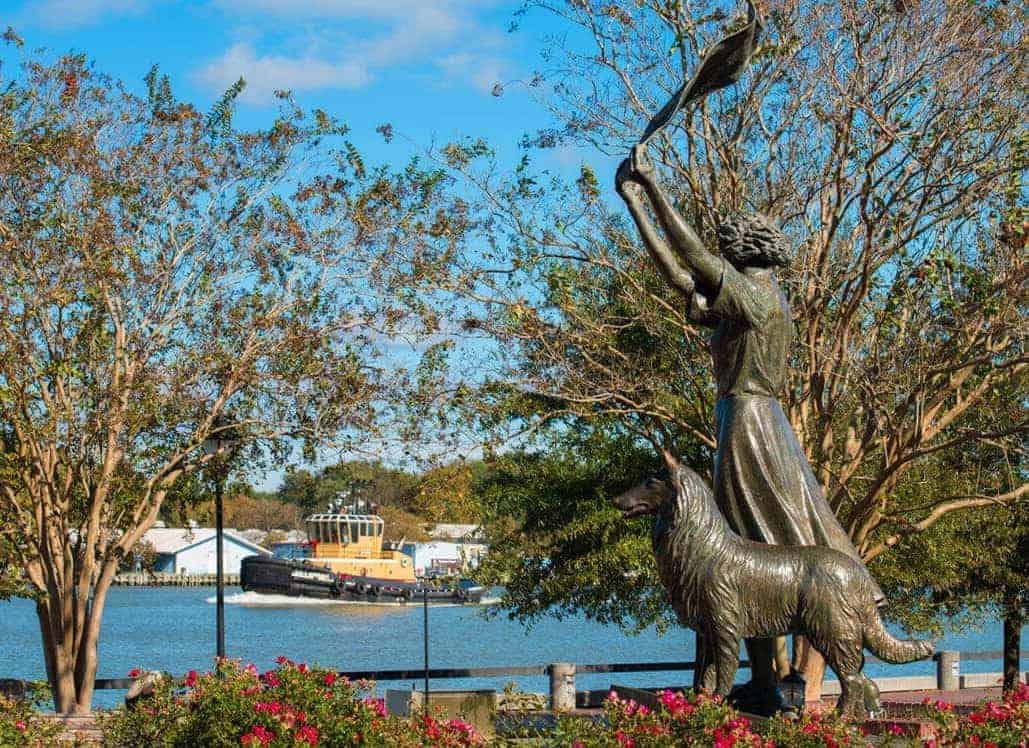
As you come to the eastern end of River Street, you will see Savannah’s famous statue: “The Waving Girl.” This beautiful statue was created by noted sculptor Felix de Weldon as a tribute to Florence Martus. A favorite local legend, Florence’s story is bittersweet. The sister of the lighthouse keeper on nearby Elba Island, Florence was rumored to have fallen in love with a handsome sailor who promised to return and marry her. The sailor gave her his white handkerchief as a token of his promise. It is said that Florence ran out to greet every ship that arrived in Savannah, day or night, waving the white handkerchief in order to ensure that she was the first to see her lover return. How much of the story is true remains a mystery, but what is certain is that Florence Martus was known to have welcomed more than 50,000 ships to Savannah during her lifetime.

